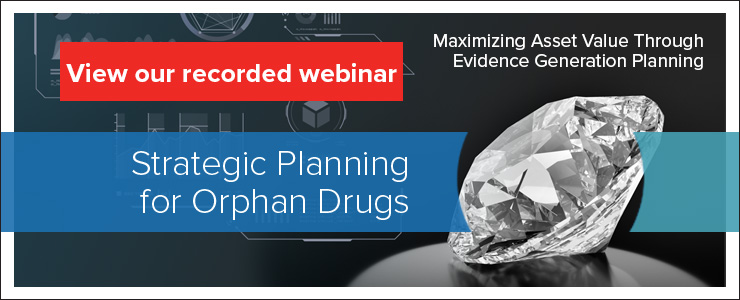
Contributed by:
Anne Heyes, MBA
VP, Value and Access (Europe)
Taking a biotech innovation from development to proof of concept is a challenging yet rewarding journey. A crucial component in this process is developing a comprehensive health economic outcomes research (HEOR) strategy roadmap that highlights potential opportunities to capture nonclinical value. Highlighting these values can ensure your technology not only stands out in the market but also appeals to investors and potential acquirers. Here are the top 5 things to know in order to maximize commercial value early in your development:
 1. Understand Payer Perceptions and the Probability of Market Acceptance
1. Understand Payer Perceptions and the Probability of Market Acceptance
Why it Matters: Payers play a pivotal role in determining the market success of a new health technology. Their perception can make or break the adoption of your innovation.
What to Do: Engage with payers early in the development process. Understand their priorities, unmet needs, and criteria for coverage and reimbursement. This insight will help you align your technology with market expectations, increasing the likelihood of successful uptake.
Real-World Insight: Imagine you have a novel treatment for a chronic disease. Early discussions with payers might reveal a high unmet need for cost-effective, long-term solutions. By focusing your development on these aspects, you can enhance your product’s appeal.
 2. Map Prescribing Pathways for Current Treatment Options
2. Map Prescribing Pathways for Current Treatment Options
Why it Matters: Understanding what competing drugs exist and how they are being prescribed helps position your technology for rapid market adoption.
What to Do: Collaborate with experts and navigate the regulatory requirements early on. Identify options such as expedited regulatory pathways that can accelerate your product’s entry into the market.
Real-World Insight: If your innovation targets a rare disease, gaining orphan drug designation can expedite its approval process and offer market exclusivity, making it more attractive to investors and payers.
 3. Develop Early Economic Assumptions
3. Develop Early Economic Assumptions
Why it Matters: Exploratory economic models are crucial for showing value to payers and investors early in development.
What to Do: Cost-benefit analyses and HEOR can highlight the economic impact of your technology compared to existing treatments. Focus on both healthcare costs and costs to society.
Real-World Insight: For instance, if your technology reduces hospital readmissions, this can translate to significant cost savings, which is a compelling argument for payers and healthcare providers.
 4. Assess Early Pricing Potential
4. Assess Early Pricing Potential
Why it Matters: A well-defined pricing strategy can significantly impact your technology’s market success.
What to Do: Perform market research to understand price sensitivity among stakeholders. Analyze competitor pricing to identify opportunities for differentiation and competitive pricing.
Real-World Insight: Suppose your innovation offers superior efficacy compared to current treatments. Pricing it strategically, slightly above the current market average but justified by the added benefits, can optimize your revenue potential.
 5. Leverage Nonclinical Value for Investment and Licensing
5. Leverage Nonclinical Value for Investment and Licensing
Why it Matters: Highlighting additional economic value along with the studied clinical parameters can make your technology more attractive to investors and potential partners.
What to Do: Use the evidence from payer perceptions, economic assumptions, and early pricing potential to craft compelling narratives for investors. This can also support favorable out-licensing terms by reducing perceived risk and highlighting market potential.
Real-World Insight: When pitching to investors, integrating clinical efficacy data with strong nonclinical evidence (like cost savings and market potential) can significantly bolster your case, leading to better funding or licensing deals.
By focusing on these 5 strategic areas, your biotechnology company can significantly enhance the commercial value of its health technology during early development. This approach not only ensures your product is market-ready but also increases its attractiveness.

